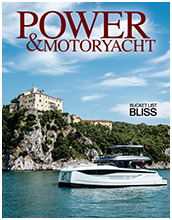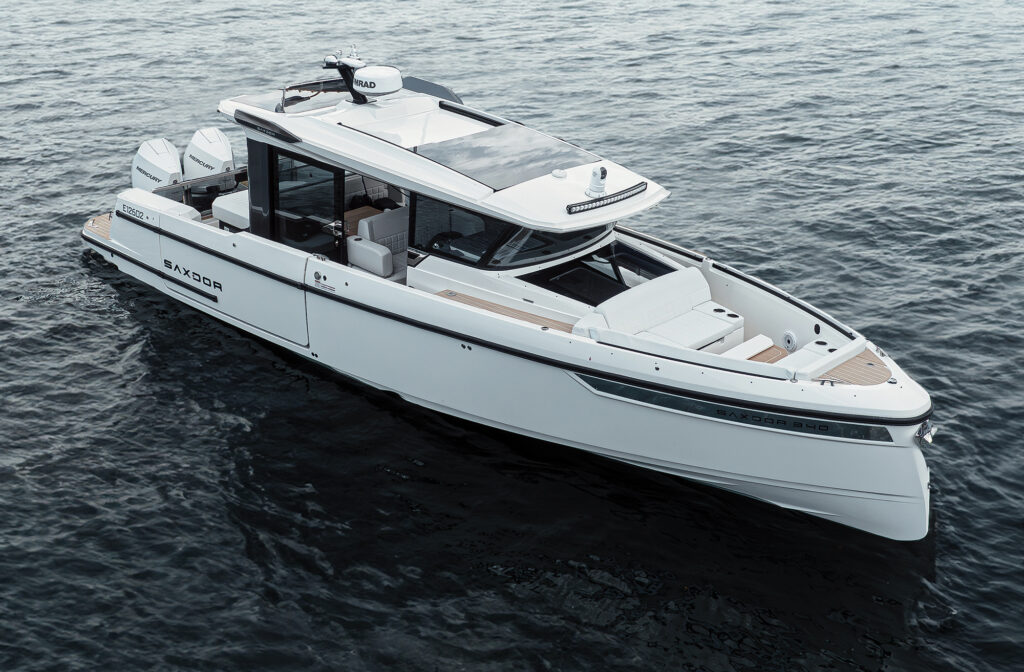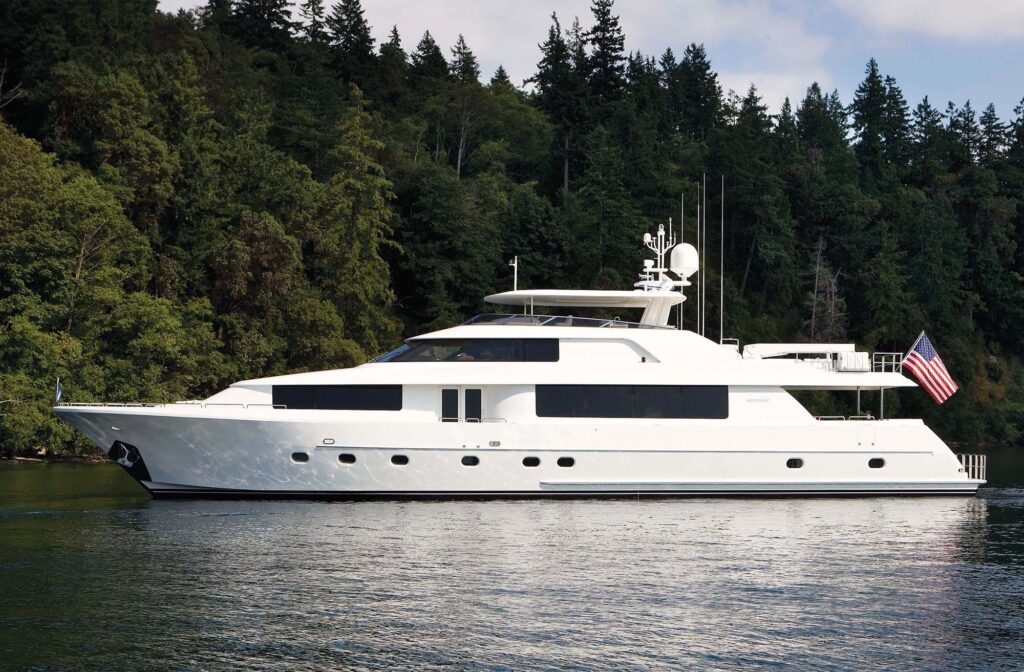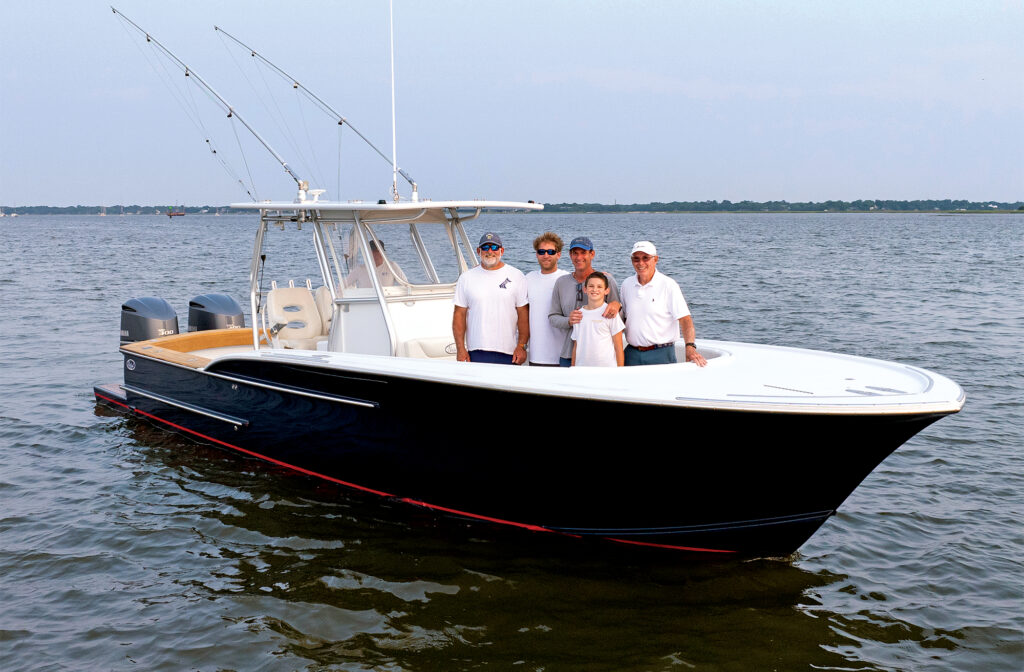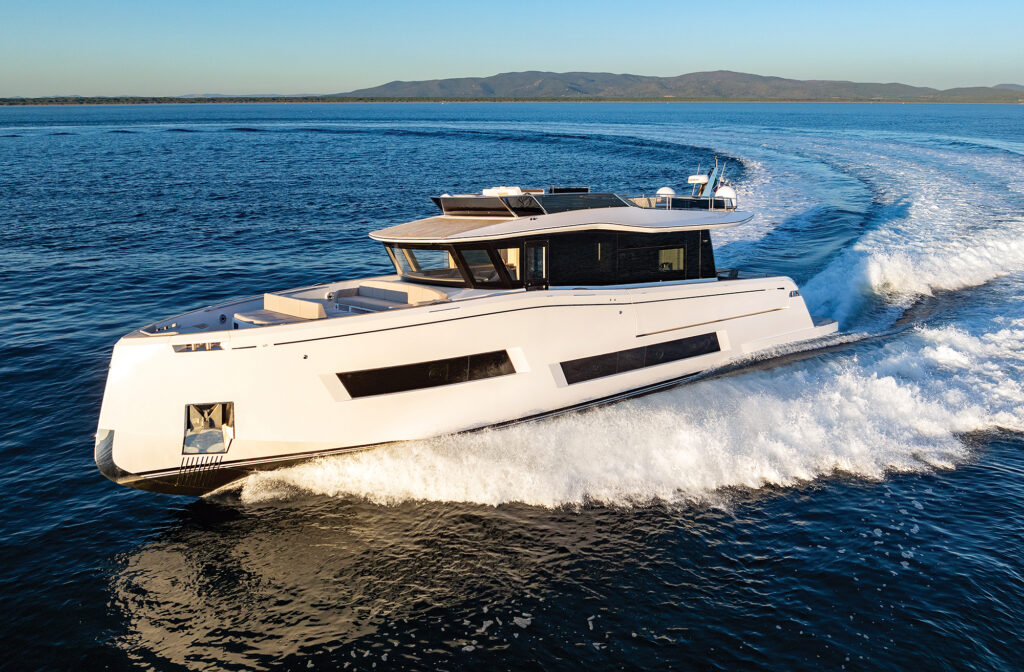As is pretty well known by now, Pearl Yachts is one of Britain’s smaller yacht companies, yet one of its most successful. Annual output is measured in dozens rather than hundreds, and each of those dozen or so yachts is put together, in China, with a level of care, quality, and an attention to the customer’s choices that borders on the bespoke. The choices are legion, and not all binary: Some options you either take or leave, but there are three engine options, three interior design schemes, and plenty of other decisions to make. You even have to choose the color of the deck caulking.

We caught up with Pearl’s Iain Smallridge, founder and managing director, at the company’s south-coast office at Swanwick, on England’s Hamble River. Smallridge makes no bones about the fact that this brand-new 63 is an upgrade of the Pearl 62, which with 25 built has been the company’s best-selling model. The features that made it so popular have not been meddled with, and regular customers will be relieved to see that the lower-deck layout is untouched, with its full-beam master stateroom amidships, accessed down its own aft companionway, plus two twin-berth guest cabins, and a VIP in the bow. It is a notably spacious arrangement—some would say class-leading—made possible by the IPS engines, which being mounted so far aft leave a lot of hull volume for the designers to work with. Proportions are generous: Headroom down below ranges from 6 feet, 2 inches to 6 feet, 5 inches, and it’s more on the main deck. Even the single berths are a full 6 feet, 6 inches long—longer, interestingly, than the master’s double.
Also unaltered is the flybridge, which beneath its huge (and optional) hardtop was always a successful space, with its intelligent mix of seating, sunbathing and floor areas, and flexible table arrangements. The foredeck, too, is the same as the 62’s. It’s down on the main deck and aft that the work has been put in to make this new model a substantive improvement on its predecessor.
Both the saloon and cockpit layouts have been tweaked to provide a roomier and more flexible feel to the seating arrangements, but the most noticeable change is the drop-down bulwarks, one each side of the cockpit, which add not just extra floor area but also improve the view. Meanwhile, underneath the cockpit sofa, the designers have sacrificed some of the headroom in the machinery space to create a garage big enough for a proper tender—okay, a nine-foot Williams MiniJet—rather than the personal watercraft which was as much as the 62 could accommodate. If you need something bigger, there is room on the platform for an 11-foot 345 SportJet, and the garage space can be fitted out as a crew cabin if you prefer. It’s one more decision for the buyer to make.

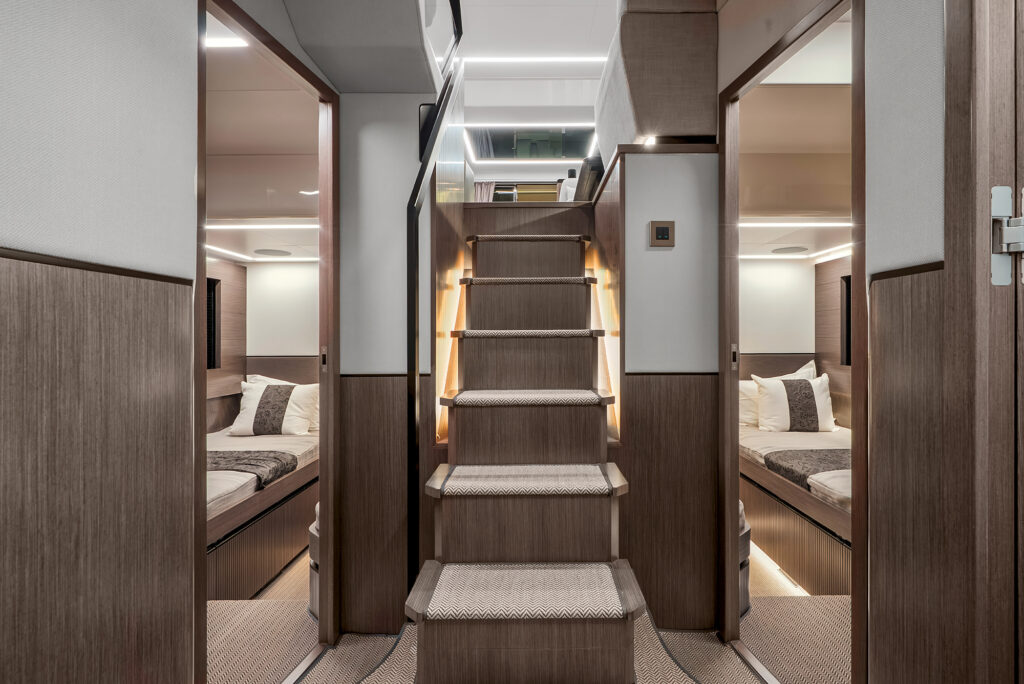
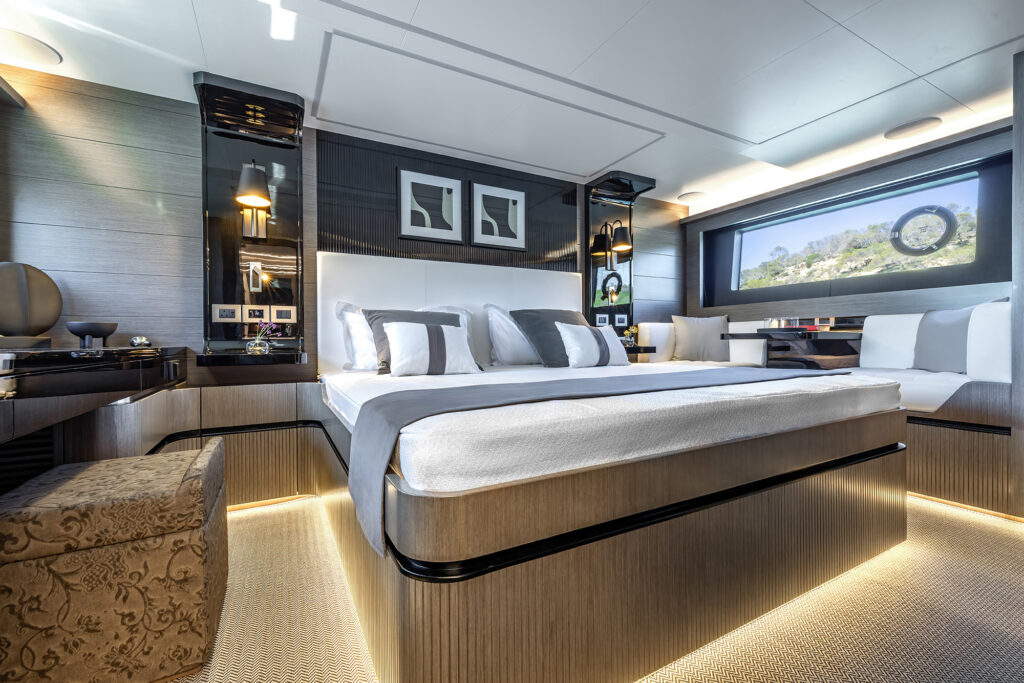
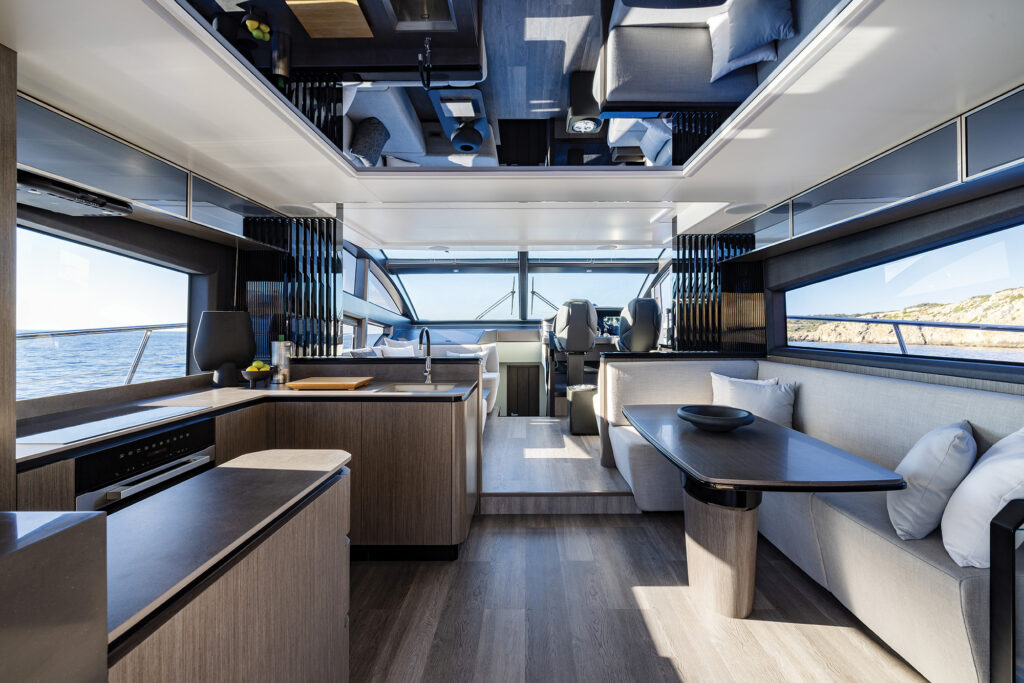
Like all Pearls, the 63’s interior is styled by the London studio of Kelly Hoppen, with a choice of decorative schemes available. Standard is the bright and welcoming “modern” design, but the most popular seems to be the one in which our test boat was finished, the moodier “indulgence.” It comes in at the same price as “luxury,” which aesthetically lies somewhere in between.
Headroom is not the only change to be seen down in the engine room. While the Pearl 62 was offered with a maximum of 1800 horsepower, the new 63 comes with Volvo’s 1000-horsepower IPS 1350s at the top of the options list, and it seems that all the 63s ordered so far have been specified with these bigger engines, including our test boat, Pearl’s demonstrator. With the extra horsepower they provide, Pearl claims a top speed for the 63 of 33 knots, but we did a little better than that on our breezy test day in Southampton Water. Two-way runs to cancel out the wind (a chill northerly) and the tide (never still in this neck of the woods) produced an average of 33.9 knots, and a fast cruise of just under 30 at 2250 rpm, with fuel and water tanks well over half full. The 63 is heavier than her predecessor, but the extra horsepower more than compensated for that, as she proved to be a good three knots faster. Handling felt just the same—sure-footed, lively, confidence-inspiring—although we did find that the turning circle at speed in these busy and confined waters was noticeably improved when we decided to switch the Seakeeper off.
Which, as decisions go, was pretty straightforward. By the time they get out onto the water, buyers of the 63 will have made plenty of tougher ones.
Pearl Yachts 63 Test Numbers:
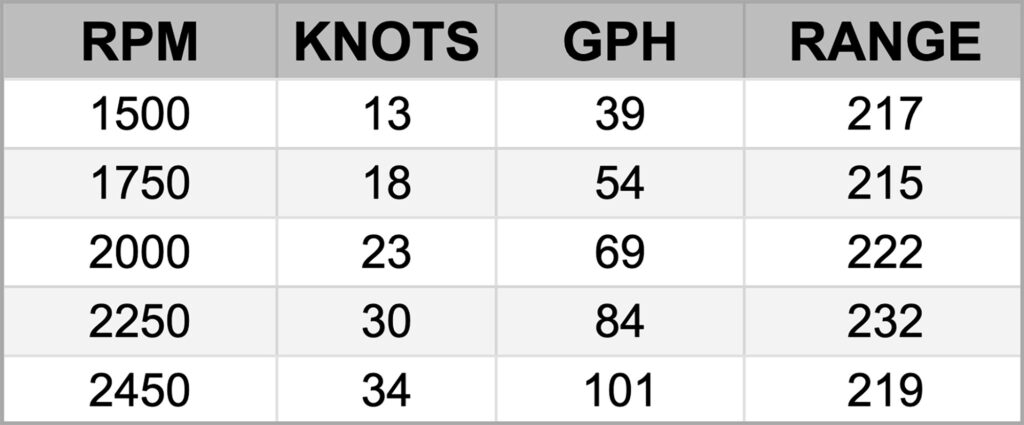
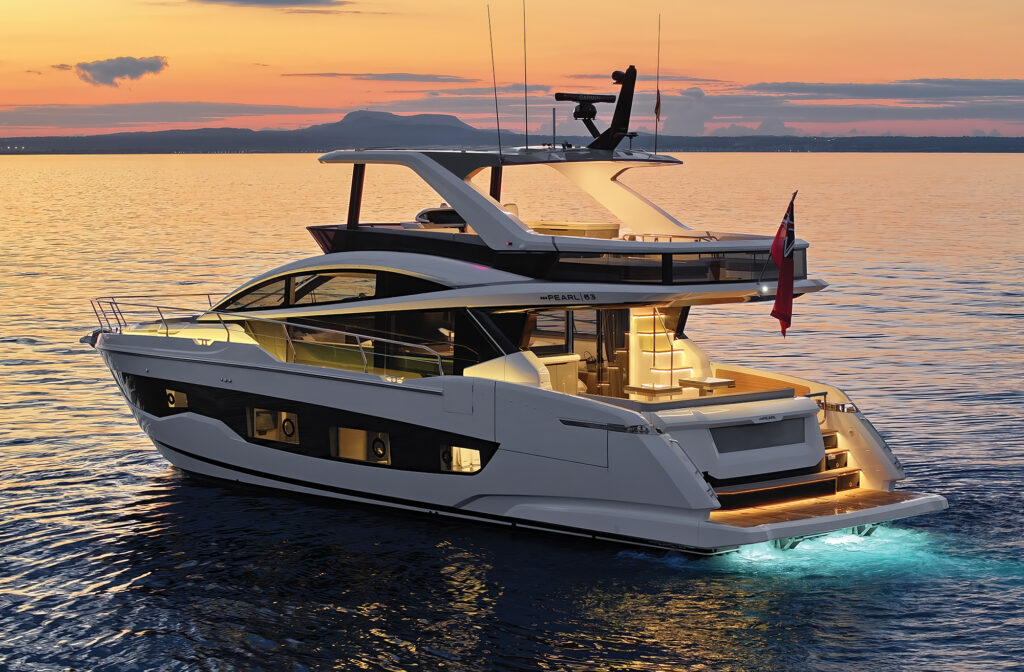
Pearl Yachts 63 Specifications:
LOA: 61’0”
Beam: 17’2”
Draft: 5’2”
Disp: 80,467 lb.
Fuel: 726 gal.
Water: 211 gal.
Power: 2/1,000-hp Volvo IPS
Price: $2.4 million
This article originally appeared in the November 2025 issue of Power & Motoryacht magazine.

